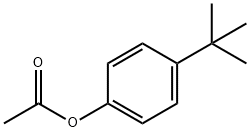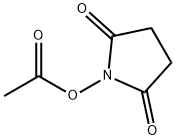BD0394945
3-PhenylpropylAcetate , 98% , 122-72-5
Synonym(s):
3-Phenylpropyl acetate;Hydroxycinnamyl acetate, ß-Phenylpropyl acetate
CAS NO.:122-72-5
Empirical Formula: C11H14O2
Molecular Weight: 178.23
MDL number: MFCD00026216
EINECS: 204-569-8
| Pack Size | Price | Stock | Quantity |
| 1g | RMB60.00 | In Stock |
|
| 5g | RMB106.40 | In Stock |
|
| 25g | RMB526.40 | In Stock |
|
| others | Enquire |
Update time: 2022-07-08
PRODUCT Properties
| Melting point: | -60 °C |
| Boiling point: | 244 °C(lit.) |
| Density | 1.012 g/mL at 25 °C(lit.) |
| vapor pressure | <0.01 hPa (20 °C) |
| refractive index | n |
| FEMA | 2890 | 3-PHENYLPROPYL ACETATE |
| Flash point: | >230 °F |
| storage temp. | Store below +30°C. |
| solubility | 0.69g/l |
| form | clear liquid |
| color | Colorless to Almost colorless |
| Odor | at 100.00 %. sweet balsam storax spicy cinnamon |
| Odor Type | balsamic |
| biological source | synthetic |
| Water Solubility | 392.148mg/L at 25℃ |
| JECFA Number | 638 |
| LogP | 3.06 |
| CAS DataBase Reference | 122-72-5(CAS DataBase Reference) |
| EPA Substance Registry System | Benzenepropanol, acetate (122-72-5) |
Description and Uses
3-Phenylpropyl Acetate is used in perfume compositions as a modifier in Hyacinth, Rose, Oriental bases, Lilac and Lily, Reseda, etc., and it blends well with the “rose alcohols”, the Linalool family, Styrax and Ylang, Labdanum, Amylsalicylate, etc. Its neutral sweetness makes it versatile, but it does not lend much odour power to a composition. Smaller amounts are used in spice flavours, fruit complexes, and certain berry flavors, including Cherry. The concentration in such flavours is equivalent to 0.5 to 10 ppm in the functional product.
Safety
| Symbol(GHS) |  GHS07 |
| Signal word | Warning |
| Hazard statements | H315-H319-H335 |
| Precautionary statements | P261-P305+P351+P338 |
| Safety Statements | 24/25 |
| WGK Germany | 2 |
| RTECS | UB9000000 |
| Autoignition Temperature | 445 °C |
| TSCA | Yes |
| HS Code | 2915 39 00 |
| Toxicity | LD50 orally in Rabbit: 4700 mg/kg |






